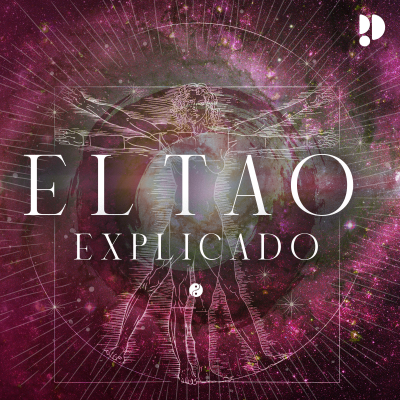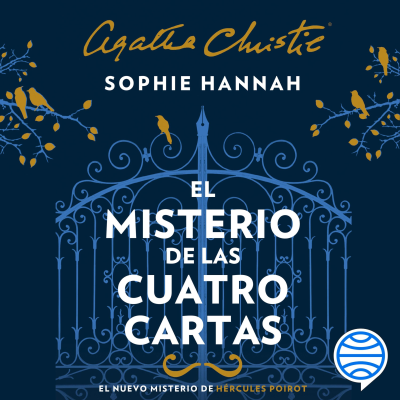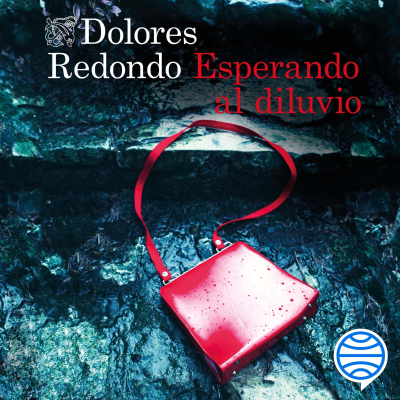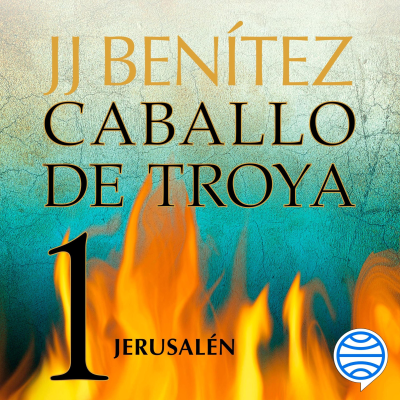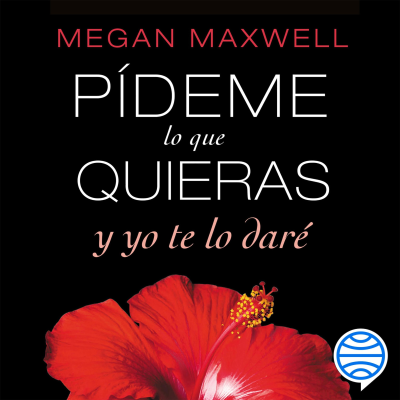
Uploading
Podcast de Ramon Berrios, Blaine Bolus
Este podcast se puede escuchar gratuitamente en todos las plataformas y en la app de Podimo sin necesidad de suscripción.
Todos los episodios
25 episodiosAbout the Episode: Chris Savage is the co-founder and CEO of the video marketing platform Wistia. He is a key figure in the video content space and personal brand, having famously scaled his company to over $50M a year in revenue, without outside investors. Chris is also a content creator, regularly sharing insights from his entrepreneurial journey on LinkedIn and hosting the podcast Talking Too Loud [https://wistia.com/series/talking-too-loud]. In this episode of “Uploading…,” Chris discusses the evolution of video content, the impact of AI on content creation, and the enduring importance of authentic storytelling. He also shares lessons learned from Wistia's growth, his content creation process and workflow, and strategies for building a strong personal brand as a founder. Today, we'll cover: - The evolution of video content and the impact of AI on content creation - The significance of trustworthiness and authenticity in an AI-driven content landscape - Adapting to audience expectations and leveraging various content formats - Chris Savage's journey as a content creator and the value of personal branding for founders - Strategies for creating engaging content, setting realistic goals, and avoiding burnout What You'll Learn 1. Evolution and Future of Video Content 2. AI’s Impact on Content Creation 3. Personal Branding for Founders 4. Content Creation Strategies 5. Content Workflow 6. Podcast Content Strategy 7. Strategic Goal-Setting Timestamps 00:00 Chris Savage’s background and company 04:51 Evolution of video tech and production 06:59 Impact of AI on video content creation 13:53 Importance of content creation for founders 17:44 Chris Savage’s content funnel 20:14 Tips on getting started as a content creator 22:41 Creating content for personal brand vs business brand 25:34 Chris Savage’s content workflow and team 27:27 Strategies for growing a podcast 31:44 Importance of goal framing on success Evolution of Video Tech: “Basically what keeps happening is that new technology comes out that makes it tremendously cheaper and easier to make video. And then the uses of video magnify and the expectations magnify." — Chris Savage, 00:05:17 → 00:05:27 Role of Founders in Business Growth: “I think there's a good question every founder should ask themselves, which is like, what's the thing that I can uniquely do that is going to add value?” — Chris Savage, 00:15:22 → 00:15:35 Trust in the Age of AI: "So I think while you should be using AI to aid in your content creation, you need to find ways to make sure that human beings that you can connect with are still really there." — Chris Savage, 00:10:10 → 00:10:23 Show notes powered by Castmagic [https://www.castmagic.io/] --- Have any questions about the show or topics you'd like us to explore further? Shoot us a DM; we'd love to hear from you. Want the weekly TL;DR of tips delivered to your mailbox? Check out our newsletter here [https://uploading.beehiiv.com/]. Follow us for content, clips, giveaways, & updates! Castmagic Instagram [https://www.instagram.com/castmagic/] Castmagic Twitter [https://twitter.com/castmagic_io] Castmagic LinkedIn [https://www.linkedin.com/company/castmagic] --- Blaine Bolus [https://twitter.com/bbols4] - Co-Founder of Castmagic [https://www.castmagic.io/] Ramon Berrios [https://twitter.com/ramongberrios] - Co-Founder of Castmagic [https://www.castmagic.io/] Chris Savage [https://www.linkedin.com/in/cjsavage/] - Co-Founder & CEO of Wistia [https://wistia.com/]
About the Episode: Jay Yang is a content creator with over 100,000 followers and the Head of Content for Noah Kagan, founder of AppSumo. At only 18 years old, Jay has already made a significant impact in the world of content creation while still attending university. In this episode of “Uploading…,” Jay shares his journey from experimenting with various online projects to landing an opportunity to work with Noah Kagan using his TAG method. He discusses his content creation process, balancing his work with education, and overcoming imposter syndrome. Jay also shares insights into his upcoming project on creating accessible social content templates for beginner creators. Today, we'll cover: - Jay Yang's content creation and audience growth frameworks - How to land high-profile opportunities using Jay Yang’s TAG method - Overcoming imposter syndrome and embracing the learning process in content creation - Benefits of social content templates for beginner creators What You'll Learn 1. Target-Audit-Gift Method 2. Importance of Empathy and Pre-Work 3. Content Creation and Repurposing Strategies 4. Content Testing and Metrics 5. The “Name Test” 6. Top-Down Approach to Content Creation 7. Bottom-Up Approach to Content Creation 8. Benefits of Using Content Templates Timestamps 00:00 How Jay Yang got into content creation 03:03 Jay Yang’s “portfolio of failure,” TAG method 06:42 Key learnings from working at Beehiiv 09:59 How to land an opportunity with your favorite company 14:38 Optimizing Noah Kagan’s content workflow 17:27 Quantitative approach to marketing; content testing 21:10 From experimentation to building a content engine that works 24:13 Overcoming imposter syndrome in content creation 28:02 Benefits of using social content templates Mastering Empathy in Business: “I think the greatest skill you can learn as a marketer, a creator, an entrepreneur, even just as a person, is empathy and being able to place yourself in someone else's shoes.” — Jay Yang [00:08:00 → 00:08:10] Keys to Building Professional Relationships: “I think that strategy of where most people ask, how can I help you? Or what can I do to work for you for free? The problem with that approach is that by asking, without showing, you're actually making the other person do more work to figure out who you are and if you're any good and what you can actually help with... And so the question that I ask myself, and I encourage people listening to this to ask is, how can I make this a no brainer for the other person? And that kind of ties back into that empathy, right? Putting yourself in the other person's perspective... To work with your favorite entrepreneur or company, basically, you need to show two things, that, number one, you want the job, and number two, that you can do the job. And the best way that I believe you can do that is to do the work upfront, to use the TAG method, to do what I like to call pre-work. And I think the coolest thing about this approach is you don't have to have any experience or, you know, credibility or a degree." — Jay Yang [00:12:46 → 00:13:13] Overcoming Impostor Syndrome in Content Creation: "I only have to be one chapter ahead of the textbook of life. Like, you don't have to be the guru preaching at the top of the mountain. You just have to be one or two steps ahead of the people behind you and the people you're sharing content to. So that's kind of what I'm realizing is, as I grow my brand, I'm not trying to be the professor at the front of the class. The way I like to view myself is as that kid in the back sharing his notes with the rest of his classmates." — Jay Yang, [00:25:21 → 00:25:49] Show notes powered by Castmagic [https://www.castmagic.io/] --- Have any questions about the show or topics you'd like us to explore further? Shoot us a DM; we'd love to hear from you. Want the weekly TL;DR of tips delivered to your mailbox? Check out our newsletter here [https://uploading.beehiiv.com/]. Follow us for content, clips, giveaways, & updates! Castmagic Instagram [https://www.instagram.com/castmagic/] Castmagic Twitter [https://twitter.com/castmagic_io] Castmagic LinkedIn [https://www.linkedin.com/company/castmagic] --- Blaine Bolus [https://twitter.com/bbols4] - Co-Founder of Castmagic [https://www.castmagic.io/] Ramon Berrios [https://twitter.com/ramongberrios] - Co-Founder of Castmagic [https://www.castmagic.io/] Jay Yang [https://www.linkedin.com/in/jayyanginspires/] - Head of Content at AppSumo [https://appsumo.com/]
About the Episode: Kane Kallaway is a content creator specializing in tech, AI, and cult brands with over 550K followers and 1B+ views. Founder of WavyStudios, Kane helps companies enhance their video content for audience growth and conversions. He also leads WavyWorld, a community/course on short-form storytelling, and shares insights into the creator entrepreneur world through his newsletter Blueprint. In this episode of “Uploading...,” Kane shares his strategies and workflow for creating engaging short-form video content. He discusses the importance of creating curiosity loops, placing strategic hooks throughout the video, and tailoring content to each platform's unique consumption experience. We discuss at length Kane’s content creation process, where he finds his ideas, how he chooses relevant topics and writes scripts with his unique angle, why rhythm and pacing are important in video editing, and how all these factors in creating an engaging short-form video content which then drives his audience to longer-form content where conversion happens. Today, we'll cover: - The importance of curiosity loops and strategic hooks in engaging audiences - Crafting the perfect rhythm and pacing for soothing, engaging videos - Tailoring content for different platforms and their unique consumption experiences - Kane's workflow for idea generation, scripting, recording, and visualizing content - Leveraging short-form content to nurture audiences and drive conversion to long-form formats What You'll Learn 1. Short-form vs. Long-form Videos 2. Storytelling Techniques 3. Personal Brand Building 4. Audience Engagement and Conversion 5. Content Creation Workflow 6. Video Idea Generation 7. Video Editing Process and Tools Timestamps 00:00 Kane Kallaway’s journey from consultancy to full-time content creation 03:44 Choosing a content type, topic, and platform for online growth 07:48 Content evolution, brand deals, short-form vs long-form content 11:41 Creating native short-form content vs repurposing long-form videos into clips 18:45 Kane Kallaway’s 5-step content workflow, from ideation to editing 25:12 How to hook and rehook the audience throughout a video 30:32 The importance of rhythm, pacing, and visuals in video editing 35:19 Kane Kallaway’s tools and software for video recording and editing Short-form vs. Long-form Content: “The fragility of the audience with short form cannot be overstated. It's like it takes hundreds if not thousands of reps of a short-form video in front of somebody on Instagram or on TikTok for them to actually understand who you are and, like, buy into you. I had this framework called content minutes, which is like, let's assume for someone to go from a stranger to a superfan level, it takes like 90 minutes of your content watched. Well, if you're making short-form video and the average one is watched 20 seconds long, that's 270 videos they would have to watch to hit that bar and become a superfan versus a podcast. If they listen to the whole hour, it's like two podcasts.” — Kane Kallaway [00:09:27 → 00:10:05] Newsletters as Content Idea Source: “So the first piece of finding what's interesting, I just am constantly scanning, and I find for the videos I make, which is like business of culture, tech stuff, email newsletters are the best place for me to find topics because they're already a curated filter on everything. So if I didn't have email newsletters, I would have to go to like TechCrunch, The Verge, Business of Fashion, Entrepreneur.com, whatever the sites are. I'd be scanning like 30 sites. And you can use something like FeedLIVE to do this, but I've tried it and there's a lot of noise, there's not enough signal, it's like way too much noise. And so what I find is email newsletters, people who have actual businesses designed to filter the bad stuff out, curate just what's interesting. And so I subscribe to like ten or twelve newsletters that I love.” — Kane Kallaway [00:19:48 → 00:20:29] Video Script Structure: “Most people think of videos as like a hook, the body, and the conclusion. I think of it like a hook, there's a dance, and in that dance, you have context and conflict, which is basically just set up, rehook. Set up, rehook. Set up, rehook. You're trying to rehook them. Then at the very end, I tried to hook them again with, like, the ending so that they share it.” — Kane Kallaway [00:23:11 → 00:23:28] Show notes powered by Castmagic [https://www.castmagic.io/] --- Have any questions about the show or topics you'd like us to explore further? Shoot us a DM; we'd love to hear from you. Want the weekly TL;DR of tips delivered to your mailbox? Check out our newsletter here [https://uploading.beehiiv.com/]. Follow us for content, clips, giveaways, & updates! Castmagic Instagram [https://www.instagram.com/castmagic/] Castmagic Twitter [https://twitter.com/castmagic_io] Castmagic LinkedIn [https://www.linkedin.com/company/castmagic] --- Blaine Bolus [https://twitter.com/bbols4] - Co-Founder of Castmagic [https://www.castmagic.io/] Ramon Berrios [https://twitter.com/ramongberrios] - Co-Founder of Castmagic [https://www.castmagic.io/] Kane Kallaway [https://www.linkedin.com/in/kanekallaway/] - Founder of Wavy Labs [https://www.linkedin.com/company/wavylabs/]
About the Episode: Dakota Robertson is the founder of Growth Ghost, a social media ghostwriting business with high-profile clients that include best-selling authors, prominent influencers, and 7 and 8 figure entrepreneurs. He scaled this venture to generate $30,000-$50,000 per month within its first nine months, then transitioned to his current role as a personal brand consultant after two successful years. Now with an audience of over 550,000 followers and generating monthly earnings exceeding $100,000, Dakota's mission is to help others to achieve freedom and make an impact through their content and online businesses. He offers a free personal branding course [https://www.fullstackcreator.com/] for creators, coaches, and business owners. In this episode of DTC Pod, he shares his strategies for creating viral content, emphasizing the importance of sharing personal experiences, addressing pain points, and providing actionable advice to connect with audiences. He also discusses his ‘what-why-how’ writing framework, his content repurposing workflow, and the value of ghostwriting for those who struggle with content creation. Today, we'll cover: - The art of simplifying your message and leveraging psychology in copywriting to create compelling content - The critical roles that relevance and curiosity play in content consumption and purchasing decisions - Dakota Robertson's proven "what, why, how" framework for creating highly engaging content - The growing importance of ghostwriting in the social media space and how it can help clients achieve their goals - Strategies for building a content funnel to nurture relationships and convert followers into customers What You'll Learn 1. Techniques for Creating Engaging Content 2. Social Media Growth and Ghostwriting 3. Content Creation Workflow 4. Repurposing Content 5. Building a Personal Brand 6. Relevance and Curiosity in Content 7. The “What, Why, How" Framework 8. Funnel Strategy and Long-Form Content Timestamps 00:00 Dakota Robertson’s background 02:22 How Dakota Robertson started on socials 05:15 Two important copywriting lessons 07:24 Inciting relevance and curiosity in social content 10:47 Dakota Robertson’s what-why-how framework 14:19 On ghostwriting as a career path 16:08 Creating content yourself vs employing a ghostwriter 19:18 Dakota Robertson’s content workflow 22:41 Ways to think of content ideas 25:06 How to create a transparent relationship with your audience 29:23 Sales funnel offers and how to convert with content Understanding the Audience’s Pain Points: “Imagine you're in a desert and you have no water. It's scorching hot. You've been walking for days, and then someone has a little water bottle. How much would you pay for that? You’d probably empty your entire bank account. Opposed to, if you're just walking on the street, you're not thirsty, you're fine. It's like, you probably won't even buy it. The only difference is the context of the pain you're in. So something is showing, ‘Hey, like, I can solve this pain point for you,’ then it's gonna be more relevant to the person.” — Dakota Robertson [00:08:30 → 00:09:02] Creating and Sharing Personal Content: “I find a lot of people in business, they're so focused on, you know, giving value and actionable stuff, and they totally neglect the personal side of things. So I think there should be more of a focus on personal stories, worldviews, and opinions, even if it's polarizing, because that's the stuff that's gonna make people love you, even if it means other people hate you.” — Dakota Robertson [00:24:44 → 00:25:06] Impact of Long-Form Content on Conversion: “If someone consumes a three-second tweet, it's like, okay, but if someone consumes a ten-minute YouTube video, you're taking up more real estate in their mind, and you're nurturing that relationship way more because they can see and hear you. And that's the stuff that converts way better, is long form. So I'm always thinking about how can I convert my short-form content to long-form and ideally get them on my newsletter so they can have a direct line of access?" — Dakota Robertson [00:32:01 → 00:32:29] Show notes powered by Castmagic [https://www.castmagic.io/] --- Have any questions about the show or topics you'd like us to explore further? Shoot us a DM; we'd love to hear from you. Want the weekly TL;DR of tips delivered to your mailbox? Check out our newsletter here [https://uploading.beehiiv.com/]. Follow us for content, clips, giveaways, & updates! Castmagic Instagram [https://www.instagram.com/castmagic/] Castmagic Twitter [https://twitter.com/castmagic_io] Castmagic LinkedIn [https://www.linkedin.com/company/castmagic] --- Blaine Bolus [https://twitter.com/bbols4] - Co-Founder of Castmagic [https://www.castmagic.io/] Ramon Berrios [https://twitter.com/ramongberrios] - Co-Founder of Castmagic [https://www.castmagic.io/] Dakota Robertson [https://www.linkedin.com/in/dakotarobertson/] - Founder of Growth Ghost [https://www.linkedin.com/company/growth-ghost/about/]
About the Episode: Tommy Clark is the founder of Compound Content Studio, an agency that helps B2B companies scale their content engines, especially on LinkedIn. Tommy has a background in fitness coaching and B2B social media, and now specializes in helping founders and marketers effectively use LinkedIn to reach their target audiences. He also writes a newsletter called "Social Files," which provides deeper tactical insights into B2 content creation and strategy. In this episode of Uploading, Tommy shares key strategies for B2B founders to effectively harness LinkedIn as a powerful content marketing platform. These include how to create a strong hook, what types of content to double down on, and why it’s important to engage with other users. We also explore the power of polarization in content and the significance of defining your "why" when building a personal brand on LinkedIn. Today, we'll cover: - How to create a successful LinkedIn content strategy for your business or personal brand - Practical tips and strategies you can immediately implement to improve your LinkedIn presence and engage your ideal customers - Key actions to build momentum on LinkedIn, including consistency and engagement What You'll Learn 1. Brand Positioning and Content Focus 2. LinkedIn Content Funnel System 3. LinkedIn Content Formats and Hooks 4. Strategies for LinkedIn Content Creation 5. How to Get Started Posting on LinkedIn 6. LinkedIn Algorithm and Engagement Timestamps 00:00 Tommy Clark’s background, how he found his way to the B2B content landscape 03:28 Why LinkedIn is ideal for B2B marketing 06:28 How founders can get started on creating content for LinkedIn 10:38 Figuring your why in content creation and how you should position your brand 15:19 What kind of content should be your first post as a founder 17:25 LinkedIn post types that perform well 20:21 Text on LinkedIn, how to create effective LinkedIn hooks 26:42 LinkedIn algorithm, strategies to get more traction on LinkedIn Why B2B Companies Should Focus on LinkedIn: “For a lot of B2B SaaS companies or just B2B companies in general, the effort that it would take to win on TikTok or another social platform is so much higher than the effort that it would take to do LinkedIn well because your audience is just hanging out there all day and they want to consume business-related content." — Tommy Clark, [00:04:07 → 00:04:23] Building a Content Marketing Funnel: “If you're a founder, it's like, what type of content do you want to be known for? And then once you have that idea figured out, then what I like to do is break it up into what I call a content funnel. So top-of-funnel, middle-of-funnel, bottom-of-funnel content. It's a good way to organize the way you think about the types of posts that you're making." — Tommy Clark, [00:07:41 → 00:07:58] How to Get Started on LinkedIn Content Creation: “If there's a client that we work with that has been totally dark on LinkedIn, or maybe they've posted like twice in the past two years, but they're going to start posting again because they've seen this podcast or they've seen someone else's content around how posting as a founder is super beneficial, what I would do is just make an intro post, like a quick context, or give some quick context on your backstory. Say why you're going to start posting, and then give your audience an idea of what to expect."— Tommy Clark, [00:15:17 → 00:15:43] Show notes powered by Castmagic [https://www.castmagic.io/] --- Have any questions about the show or topics you'd like us to explore further? Shoot us a DM; we'd love to hear from you. Want the weekly TL;DR of tips delivered to your mailbox? Check out our newsletter here [https://uploading.beehiiv.com/]. Follow us for content, clips, giveaways, & updates! Castmagic Instagram [https://www.instagram.com/castmagic/] Castmagic Twitter [https://twitter.com/castmagic_io] Castmagic LinkedIn [https://www.linkedin.com/company/castmagic] --- Blaine Bolus [https://twitter.com/bbols4] - Co-Founder of Castmagic [https://www.castmagic.io/] Ramon Berrios [https://twitter.com/ramongberrios] - Co-Founder of Castmagic [https://www.castmagic.io/] Tommy Clark [https://www.linkedin.com/in/tclarkmedia/] - Founder of Compound Content Studio [https://www.compoundcontentstudio.com/]
Disponible en todas partes
¡Escucha Podimo en tu celular, tableta, computadora o coche!
Un universo de entretenimiento en audio
Miles de pódcasts y audiolibros exclusivos
Sin anuncios
No pierdas tiempo escuchando anuncios cuando escuches los contenidos de Podimo.


